Bad Wiessee
When President Hindenburg appointed Hitler as chancellor on 30 January 1933, Germany was in a state of turmoil. This was expressed not only in the form of political disagreement but also in form of violence in the streets and squares where the supporters of different parties clashed. It was mainly communists and Nazis who clashed and deaths on both sides were not uncommon. The Nazi fighters came mainly from a group called the Sturmabteilung (SA) and were a paramilitary group that had been founded in 1920. The SA consisted mainly of young men united in nationalism and anti-communism and was a diverse group that was also attracted by the violent romanticism which characterized the Nazis. The number of persons who became members of SA increased steadily and in January 1933 amounted approximately 3,000,000 men. The SA under the leadership of the robuste and homosexual captain Ernst Röhm had greatly contributed to Hitler’s success and celebrated Hitler’s appointment as chancellor with a torchlight parade through Berlin on January 30.
But SA and Ernst Röhm’s ambitions did not match Hitler’s. Ernst Röhm had ambitions that the German army (Reichswehr) would be subordinated to the SA with himslef as commander-in-chief. This was completely unthinkable for the army as they regarded SA as a bunch of thugs and a threat. Hitler was well aware of this and for his part the SA had more or less served out its role in connection with his appointment to chancellor. But the SA had become a power factor that was difficult to satisfy and they expected a prominent role in the future Germany. Hitler understood that if his plans with Germany could be realized, he needed the army and therefore he had to neutralize or at least heavily weaken the SA in the eyes of the army.
At this time, the SS was subordinate to the SA but SS leader, Heinrich Himmler, and his deputy, Reinhard Heydrich, aired morning air. With Hitler’s consent, a conspiracy theory was compiled with the army’s tacit consent that SA was planning a revolution to take power itself. On the pretext of discussing the role of the SA in the new Germany, Hitler had summoned the leadership of the SA to the spa town of Bad Wiessee, about fifty kilometres south of Munich on June 30, 1934. SA’s leadership had booked rooms at Pension Hanslbauer and members of SA had begun to arrive the day before, including, Röhm and his deputy Edmund Heines. Other leaders would arrive by train the next day. Early in the morning, the first arrests began when SA members arriving by train were arrested, including Röhm’s bodyguards whose loyalty Hitler did not trust. Then Hitler and his entoruage went on to pension Hanslbauer where Röhm, Heines (and their male bedmates) and others were arrested whilst in bed, charged with treason and planning a coup d’état. The Arrested, including Röhm and Heines, were taken to Stadelheim Prison in Munich.
Later in the morning on June 30, operation Kolibri was put into operation. This was a murder operation in which the SS, based on a pre-compiled list, murdered political opponents, including former chancellor Kurt von Schleicher. Heines was taken to the Dachau concentration camp on the same day, where he was murdered along with other arrested. Most were murdered in Stadelheim prison in Munich or at the SS barracks in Lichterfelde, Berlin. Röhm was offered to commit suicide, but refused and was shot on Hitler’s orders July 1, 1934. It is estimated that in the following days between 150 – 200 people were murdered. The whole operation has afterwards been called the Night of the Long Knives and came to strengthen Hitler’s position. Both the army and President Hindenburg gave tacit consent to the purges, bringing Hitler and the army closer together. Another consequence was that the SS became superior SA, whose further importance and influence in Germany became marginal.
Current status: Demolished (2018).
Address: Bodenschneidstrasse 9, 837 07 Bad Wiessee.
Get there: Car
Follow up in books: Kershaw, Ian: Hitler – A Biography (2008).

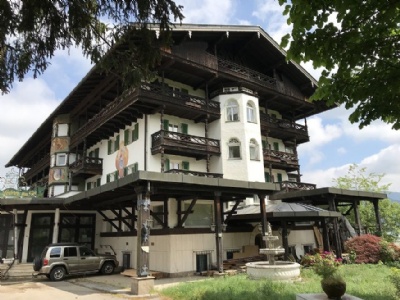
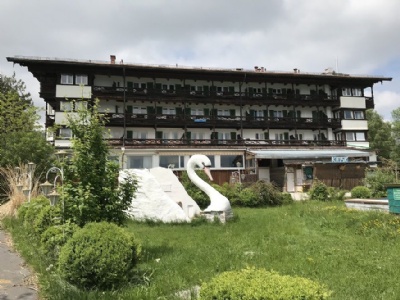
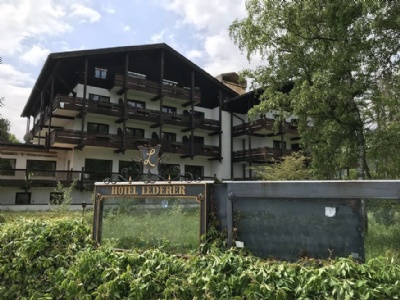
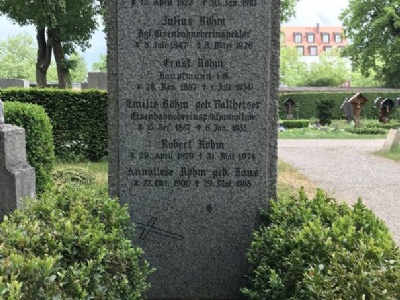
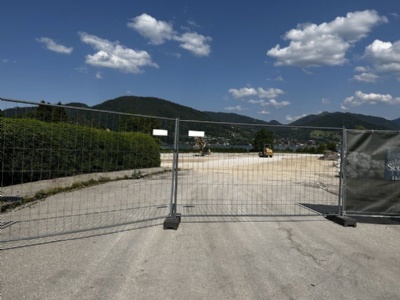
The pension was some time after the war renamed hotel Lederer and was torned down in 2023. When I visited the site in 2018 it was still there and beautifully situated next to Lake Tegernsee, but alreday then it had been closed for several years. The owner lived in the hotel but the hotel was worned out and in a great need for repairs. The owner fought a fight against the bank and authorities who wanted to torn down the hotel.
Ernst Röhm is buried in the family grave at the Westfriedhof in Munich. Although Röhm was a hardcore Nazi, he never got involved in Nazi crimes in the same way as other Nazi leaders. This is certainly one reason why his grave has not been the subject of discussion as to whether it should remain or not. Another reason may be the fact that Röhm fell out of favor with Hitler and that he was gay. His status in neo-Nazi circles is rather low and thus more or less uncontroversial.